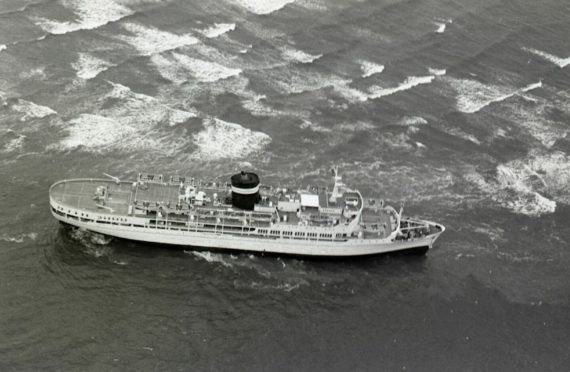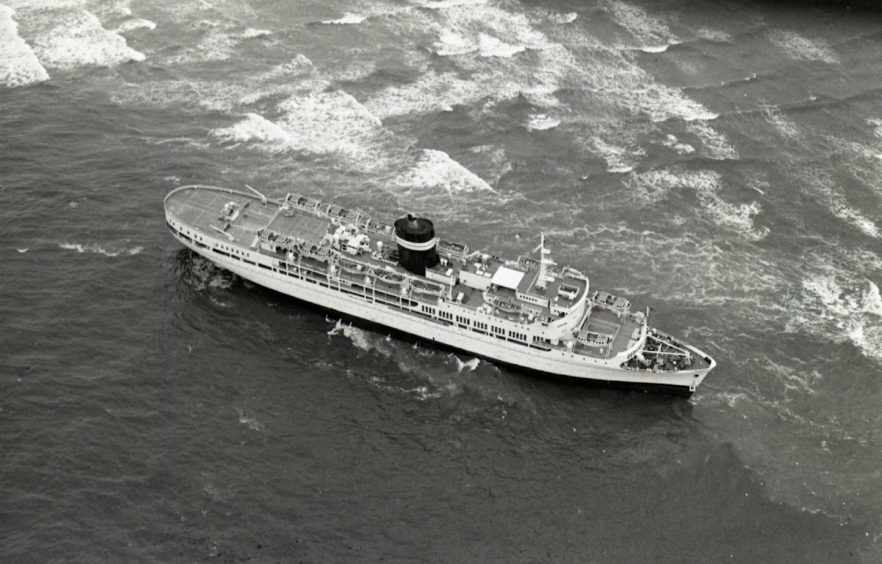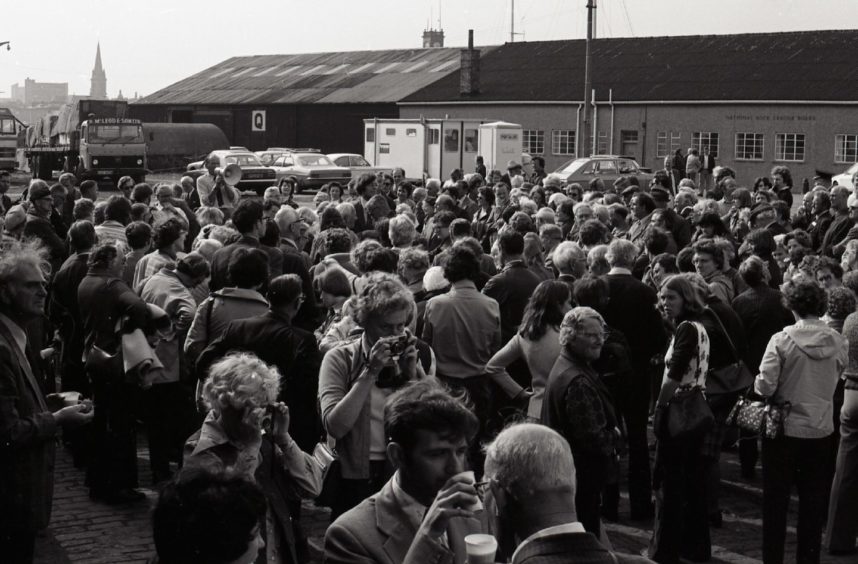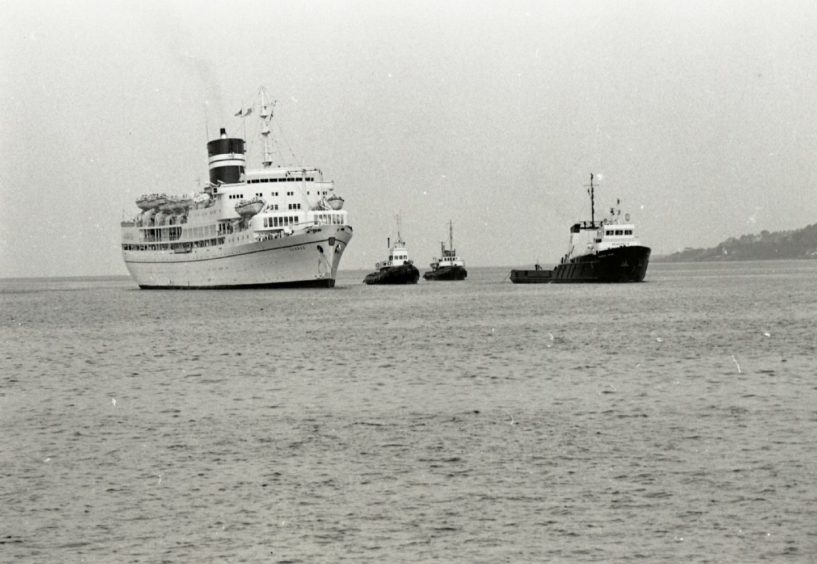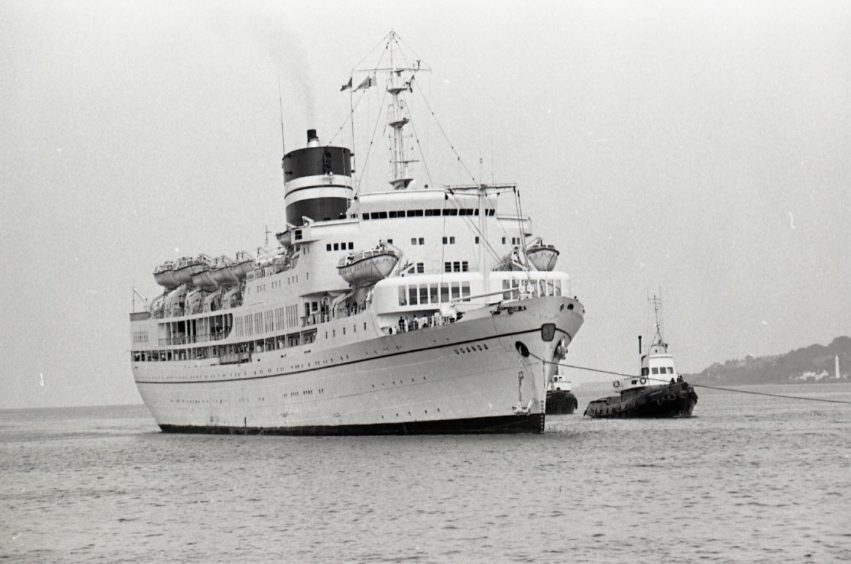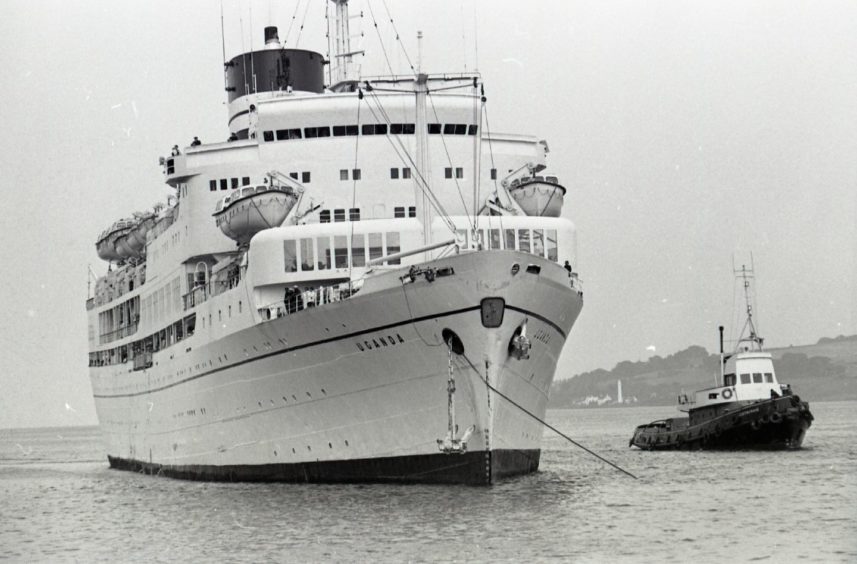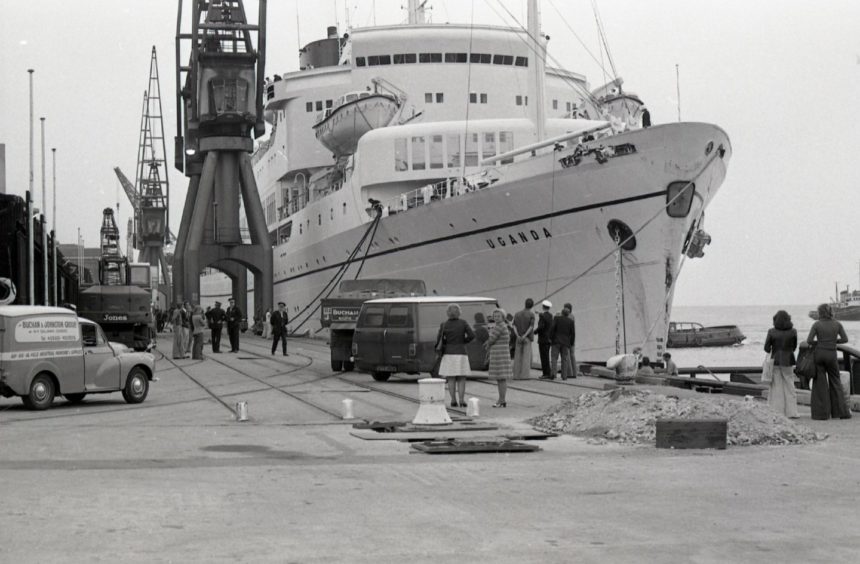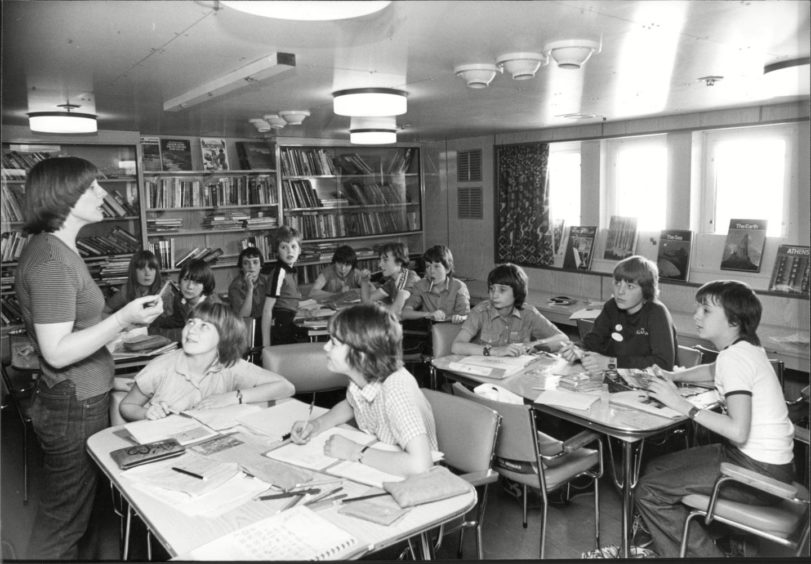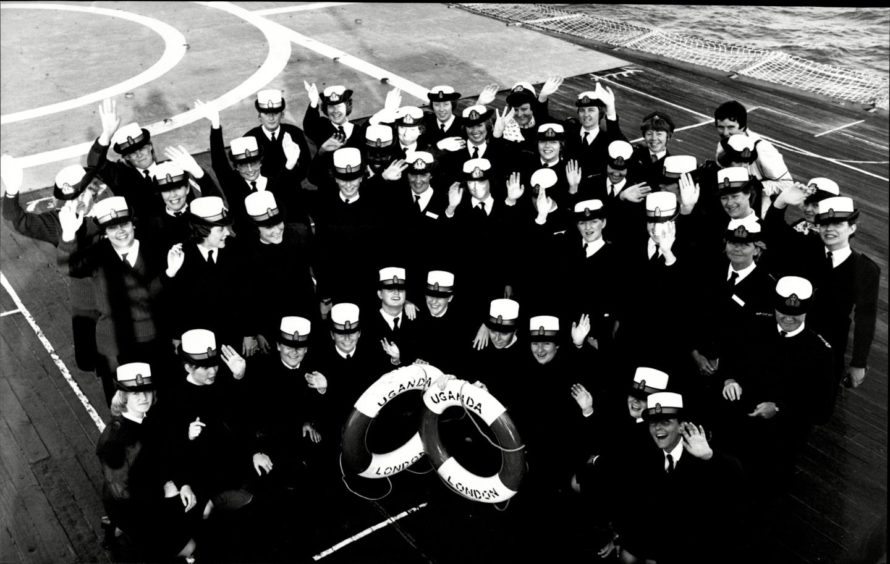These were the incredible scenes when a 17,000-ton cruise ship ran aground off the coast of Dundee 45 years ago.
A rescue mission was scrambled when the SS Uganda came a cropper and got stuck on a sand bank in the River Tay for over 12 hours.
Uganda was an educational steam ship which sailed the seven seas from 1958-1982, giving thousands of lucky kids a glimpse of what the world at large had to offer.
These cruises were often the first experience of foreign travel for students who would learn about history, geography, religions, foreign languages and currency.
So what happened to the SS Uganda back in August 1976?
She was steaming towards Dundee harbour from Tilbury when she ran aground one mile off Buddon Ness around 4.15am.
Dundee harbour master, Captain R W Forbes, was called from his bed in the early hours of the morning to coordinate the operation to reflect the vessel.
Just after 6am the tide began to ebb, and with every passing minute the chances of re-floating the vessel grew more remote.
The Uganda had been scheduled to leave Dundee on the first stage of a 10-day National Trust for Scotland annual adventure cruise to Scandinavia.
More than 1,000 passengers were due to board between 2pm and 5pm but those who arrived at the quayside found their ship was just a grey speck on the horizon.
Rather than face a long wait at the quayside, many passengers left the harbour area.
Some chose to go into the city centre to do some window shopping while others went further afield to Broughty Ferry and the beach.
Fleets of coaches which brought nearly 800 people from Glasgow and Edinburgh were held at the harbour until it was found that the ship could be freed that night.
Contingency plans including urgent inquiries into the availability of overnight accommodation in the city were made but only 150 spaces were found.
Some comfort was provided for those who stayed by the arrival of a Salvation Army mobile canteen which soon attracted a long queue for hot drinks.
Three oil supply vessels were later dispatched on a rescue mission at 5pm.
Seaforth Victor, Seaforth Saga and Seaforth Warrior, attached lines to the stricken vessel and began to pull her free from the sand bank.
Captain Forbes said: “We used oil supply vessels for the towing operation as they had considerably greater pulling power than the small harbour tugs used for berthing vessels at Dundee.
“The supply ships are equivalent in pulling power to deep sea tugs.”
The P&O liner was finally released from the sand bank shortly before 6pm.
She berthed at King George V harbour 90 minutes later.
Captain Forbes paid tribute to the full co-operation he had received from both the masters and pilots of the Seaforth oil supply vessels.
He said: “I am full of praise for them.
“Without their willing help the smooth completion of the operation would not have been possible.”
Lord Birsay, cruise leader for the National Trust, said the passengers had accepted the news of the delay quite cheerfully.
He said: “They have responded extremely well and taken the delay in good spirits.
“The P&O officials did everything possible to keep us updated of progress with the Uganda.”
P&O officials flew from London by private plane to Dundee and cruising manager John Sharp said there would be a Board of Trade inquiry into the incident.
He said: “There has probably been no underwater damage at all, but this will have to be verified by a diver.
“She was not making any water and there is every indication that there is no damage to either hull or propeller.
“I am confident that the Uganda can make up much of the time lost by increased speed.
“Passengers may lose a little time ashore but should get to all the points on the published itinerary.
“Obviously I was very anxious when I heard the ship had gone aground, but I am happy and relieved that she will now be able to complete the cruise.”
She finally left Dundee about 12 hours late at 5am the following day with 1,100 passengers for the annual adventure cruise.
By noon she had steamed 76 miles and by Tuesday was passing Svinø Island just off the Norwegian coast.
The passengers were disappointed that a highlight of the cruise, a visit to Narvik with excursions to Sweden, was cancelled because the delay at Dundee made it impossible to reach Narvik in time.
Instead Uganda cut the voyage by calling at the fjords, just inside the Arctic Circle, where energetic passengers enjoyed a walk to a glacier.
The passengers, who were tired after their long wait in Dundee, soon forgot their troubles at film shows, lectures, ceilidhs and in the restaurants and bars.
Lord Birsay said: “Everyone has been very reasonable about this.
“Of course we are all frustrated that we had to miss Narvik but there was nothing we could do about it.
“Everyone seems to be enjoying themselves.”
Morag Murray from Dunning entertained passengers with Gaelic songs.
The Rev James Currie of Dunlop, the ship’s padre, paid tribute to the efficiency of the National Trust staff and the crew for having saved the situation.
He said despite the delay and some rough weather off the Norwegian coast the cruise had been a great success.
What happened next?
As the 70s turned into the 80s, it seemed she would carry on cruising.
However, in the spring of 1982, events in the Falkland Islands brought about a most unexpected change.
The ship was requisitioned and used as a hospital ship during the conflict with Argentina.
A helicopter platform, fittings for replenishment at sea, satellite communications and wards and operating theatres were installed.
In accordance with the Geneva Convention, she was painted white with eight red crosses and 730 casualties were treated on board the ship.
After 113 days and 26,150 miles, she returned to a well-earned hero’s welcome at Southampton.
She returned to educational cruises in September 1982 but it was short-lived.
In November she was chartered for two years to serve as a store ship between Ascension Island and the Falkland Islands.
Despite efforts to preserve her, she was sold to Taiwanese breakers and arrived at Kaohsiung on July 15 1986.
In the end she cheated the breakers, capsizing during typhoon Wayne on August 22.
She was still ashore on her side in March 1992, but has since been broken up.
